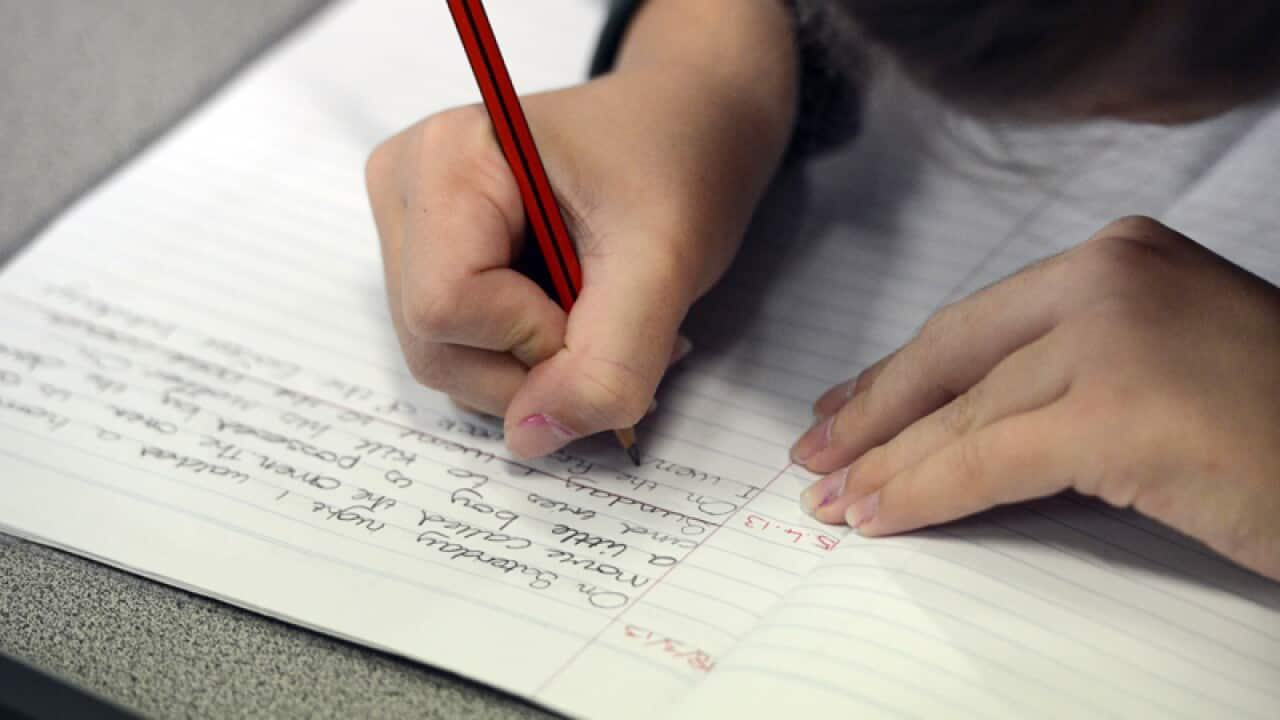The chair of Indigenous linguistics at ANU University has called for a national strategy to improve Indigenous language education in schools as poor rates of attendance and performance continue to plague communities.
Professor Jane Simpson said in the last 30 years, the states had shown that they "don't have the resources, skills or desire" to cater for the language needs of children with an Indigenous language as their first language.
"It is expensive in the short-term to run mother-tongue medium instruction programs and English-language programs for children," she said.
But she said the long-term costs for children and their communities of not having well-supported education programs were "much higher".
"There needs to be a national strategy and impetus for improving the situation," she said.
But a spokeswoman for the Northern Territory Department of Education told SBS News that the teaching of Indigenous languages in that state was a "priority."
"At the end of 2015, over 50 Northern Territory schools were delivering Indigenous Languages and Cultures programs," she said.
Different needs
Professor Simpson identified three groups of Indigenous children, all with different educational needs.
Those included children who speak a traditional Indigenous language as their first language, children who speak a new "contact" language as their first language - including Aboriginal English varieties and Kriol - and Indigenous children who don't speak a traditional language but who want to learn one.
"Indigenous children who speak a traditional or new Indigenous language have a lot of difficulty, as they struggle to understand what the teacher is saying, and struggle to make themselves understood," Ms Simpson said. "They need mother-tongue medium instruction programs and they need excellent English language instruction."
Tom Calma, of Australian Literacy and Numeracy Federation (ALNF), told NITV's The Point program that bilingual education for Indigenous children showed proven results.
"The evidence from around the world shows that somebody who learns in their first language actually accelerates through the education system," he said.
Mr Calma said Indigenous people have historically been at a disadvantage in the Australian education system and the time had come for tailored education.
"We were locked out of the education system for a long time. We've also been forced into and education system that doesn’t always suit our needs, he said.
Closing the Gap
In February 2016, Prime Minister Malcolm Turnbull committed $20 million to the Australian Institute of Aboriginal and Torres Strait Islander Studies for the preservation of language and culture.
Addressing Parliament, he acknowledged that "prior to the arrival of European settlers, Aboriginal and Torres Strait Islander Australians spoke hundreds of languages and over 600 dialects. These words carried knowledge.
"Tragically, many of these languages have been lost and many are critically endangered.”
Professor Simpson said that fostering languages in schools would play a big role in preserving them.
She said some of the biggest problems at the moment were a lack of trained teachers who were fluent in Indigenous languages, a lack of resources for many Indigenous languages and a lack of training for teachers in language awareness and language-teaching methods.
She said this was particularly marked in the Northern Territory, where a large number of people spoke an Indigenous language as their first language, particularly in remote areas.
However a spokeswoman for the Northern Territory Department of Education told SBS News that appropriate supports were in place.
"A range of departmental initiatives are resourced to support the delivery of Indigenous languages and cultures programs in schools, which encourage students to learn about communicating in Indigenous languages and about associated knowledge systems and cultures," she said.
"This includes the employment of 152 assistant teachers in remote community schools who are bilingual in English and the first language of the children in the community. These assistant teachers work alongside English language teachers to support the delivery of teaching and learning programs across the curriculum."
Professor Simpson said more needed to be done at a national level.
"The major risks are that Indigenous children will feel alienated from the school, because they cannot understand what they are being taught and feel stupid, that they will not learn enough at school so as to have choices about what they do and how they live," she said.
"There is also a big risk that, if children do switch to speaking a new contact language or Australian English all the time, that they will stop using their traditional language, and so it will not be passed on to their children.
"Their children will then be more alienated from their grandparents.
"The languages will then become highly endangered."



